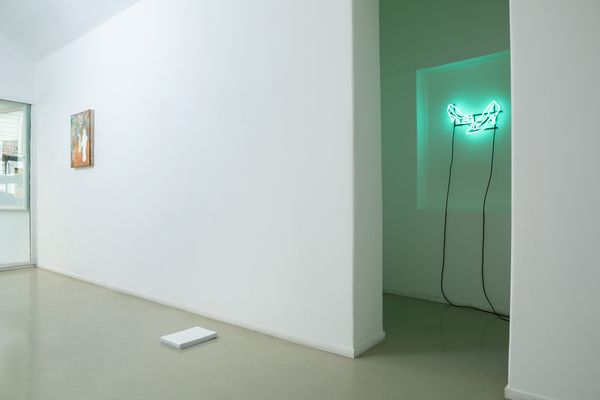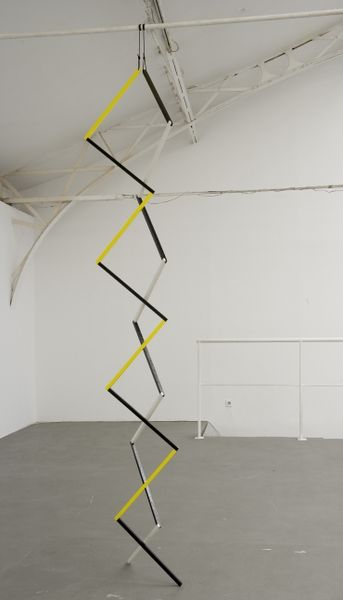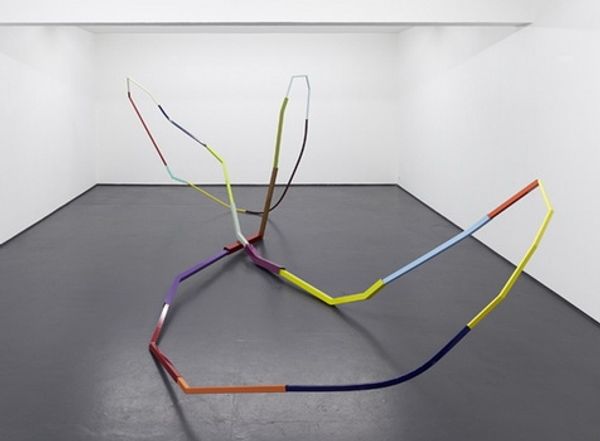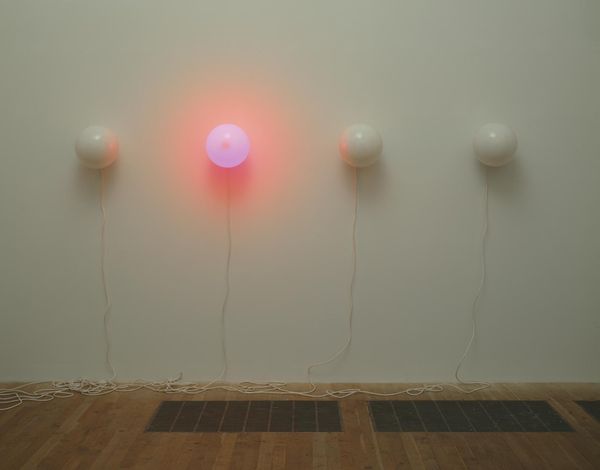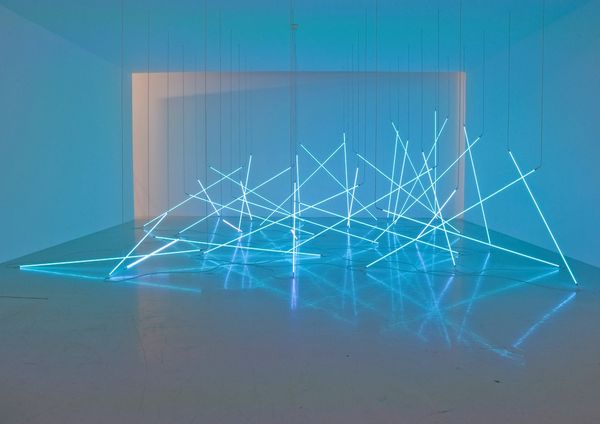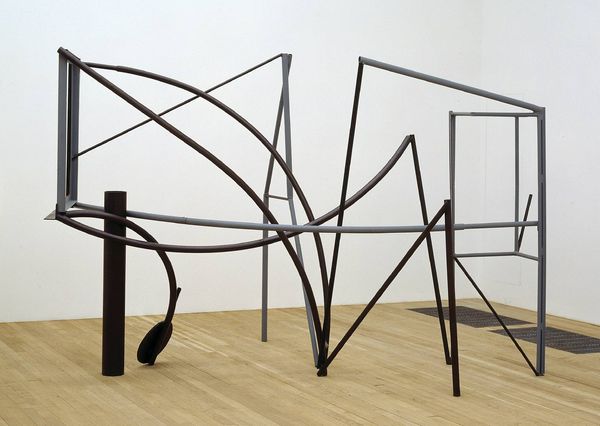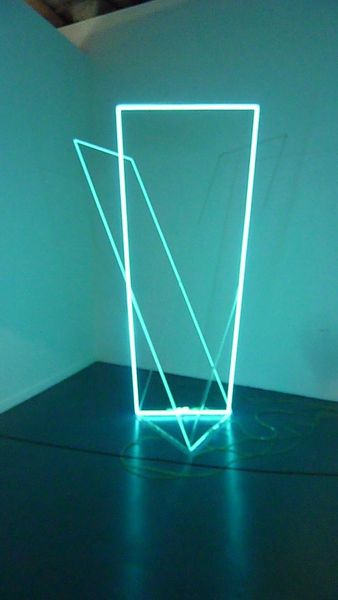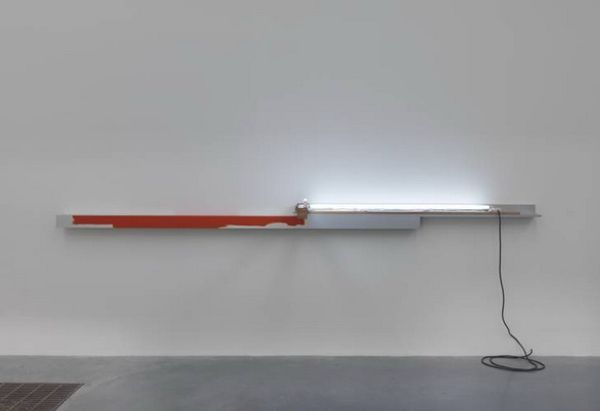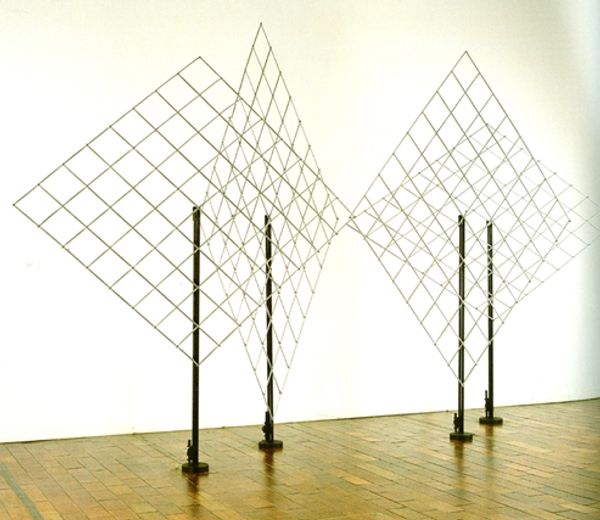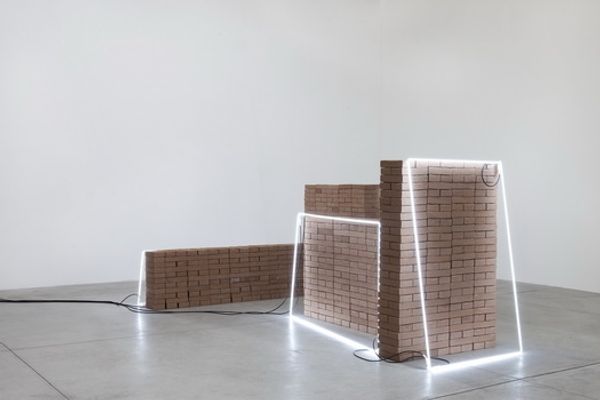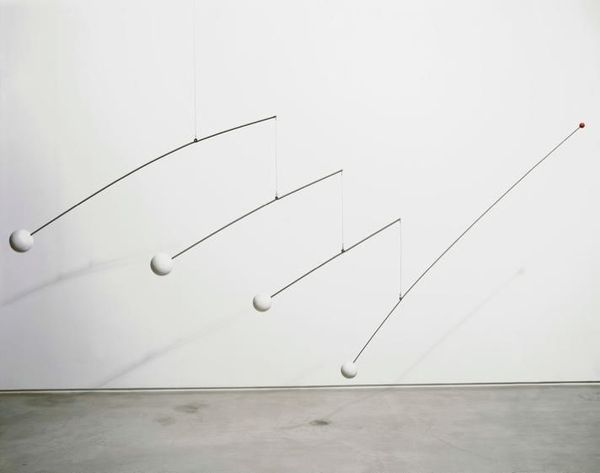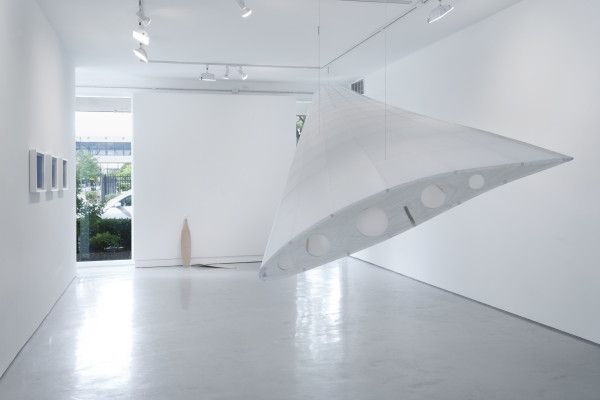
Dimensions: overall display dimensions variable
Copyright: © Martin Boyce | CC-BY-NC-ND 4.0 DEED, Photo: Tate
Curator: Martin Boyce, born in 1967, created this work, titled ‘Our Love is Like the Flowers, the Rain, the Sea and the Hours’. It's part of the Tate collection, an installation with variable dimensions. Editor: My first impression is one of cool, almost clinical elegance. The neon structures evoke a stylized forest, but it feels very artificial. Curator: The materials are crucial here. Boyce often uses industrial components, like these neon tubes, to re-imagine natural forms. It speaks to the mass production and manufactured landscape we inhabit. Editor: And how does the institutional setting affect its meaning? Displayed in the sterile gallery space, the "forest" becomes self-aware, commenting on the museum's role in framing nature itself. Curator: Precisely. Boyce challenges the traditional hierarchy between natural and artificial, highlighting our complicated relationship with the environment. Editor: Thinking about the title, I wonder if there's a hint of irony? Are these neon trees meant to symbolize the ephemeral nature of love? Curator: Perhaps. Or maybe Boyce is suggesting that even love, like these manufactured trees, is shaped by the forces of production and consumerism. Editor: I hadn't thought of that. It leaves you pondering the politics embedded in everyday experience. Curator: Yes, a poignant reminder of the manufactured realities we navigate.
Comments
tate 6 months ago
⋮
http://www.tate.org.uk/art/artworks/boyce-from-our-love-is-like-the-flowers-the-rain-the-sea-and-the-hours-t12132
Join the conversation
Join millions of artists and users on Artera today and experience the ultimate creative platform.
tate 6 months ago
⋮
T12312 is part of a larger installation that was shown at the artist’s solo exhibition, entitled Our Love is Like the Flowers, the Rain, the Sea and the Hours, at Tramway, Glasgow in 2002. The group of elements that Tate owns consists of sculptures that are made of industrial materials and evoke real objects: three trees, two park benches and two park rubbish bins of different colours and sizes. Fluorescent tubes in minimal metal housings that have been gloss-painted in light blue are assembled to suggest three simple tree shapes, comprising a trunk and three or four branches. The trees are each suspended from the ceiling with a steel chain so that they do not quite touch the ground; at 2.5cm from it, they give the impression of hovering. The benches and bins are positioned around the trees. They are made of a combination of existing standardised steel tubes and elements of laser-cut and folded steel. One of the benches has legs and supports for a seat and a backrest at either end and is spray-painted in yellow gloss; the other is longer, with an additional central leg and back support and a black gloss spray-painted finish. Both benches are powder-coated. The black bench has a single length of hardwood as a back support. This is stained and wire-brushed. The benches have no seats and are not intended to be functional. The bins of the installation are four-sided and are made to appear as if they lean to one side from whichever angle they are viewed. The smaller bin has a black gloss spray-painted finish, while the larger has a red gloss spray-painted finish. All the light in the installation comes from the neon tubes, and a dimmer switch for adjustment is attached to each of the trees. The installation could be shown in different configurations depending on the size of the room and the place of the exhibition. Ideally it should be installed in a separate room, or area, of approximately 50 sq metres. It is, however, always supposed to convey the feeling of a winter hinterland. Groups of elements of the work may be installed separately, or the work may be installed as one element of a larger room installation of works by the artist, for example in combination with Gate (We don’t meet here. We are always together first.) 2004 (T11905).
